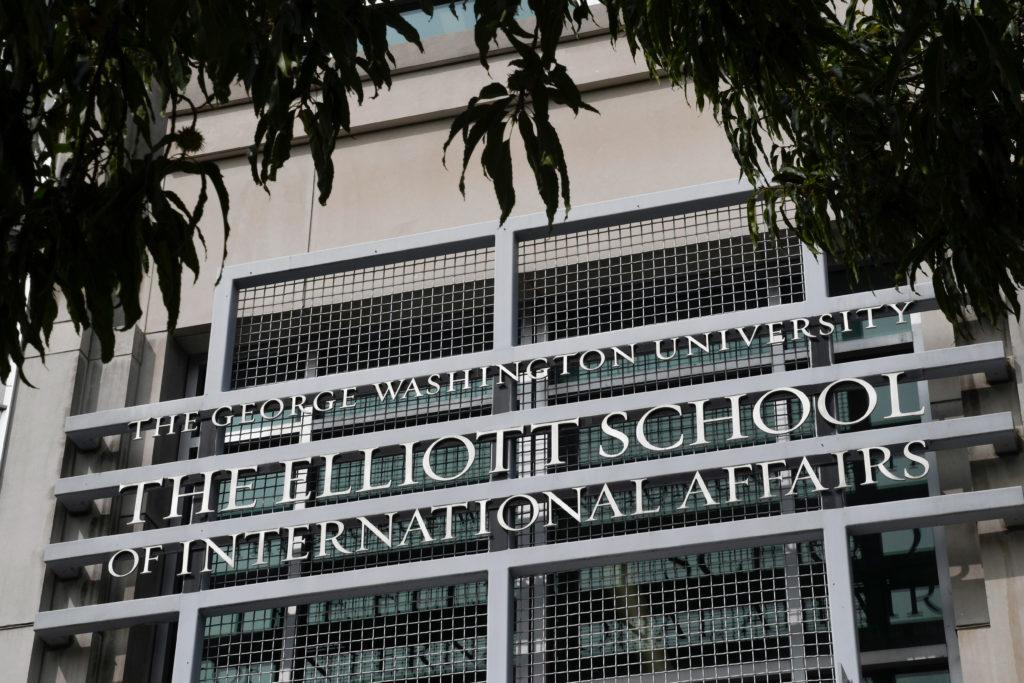Four European experts on China discussed how the country has expanded its influence in the Global South and Europe through the Belt and Road Initiative during an event at the Elliott School for International Affairs on Tuesday.
The experts conducted research in eight countries — Brazil, Cambodia, Chile, Kenya, Poland, South Africa, Serbia and Thailand — and identified three central mechanisms to China’s influence: narratives, networks and incentives, each of which are carefully tailored to the needs of each country. ESIA’s Sigur Center for Asian Studies hosted the event — moderated by Professor Eric Schluessel — in partnership with the Institute for European, Russian and Eurasian Studies and the Latin American and Caribbean Studies Initiative.
The researchers — Dominik Mierzejewski, Jaroslaw Jura, Mario Esteban and Bartosz Kowalski — all teach international relations at universities in Poland and Spain.
“BRI itself is just an umbrella institution,” said Mierzejewski, a professor at the University of Lodz in Poland. “From our perspective, it’s just not a big strategy, but it’s rather kind of an umbrella that brought all Chinese investments under one centralized umbrella.”
In the South Pacific region, China has established contacts with important officials, like Princess Sirindhorn in Thailand, Mierzejewski said. Additionally, he said the Chinese conglomerate Huawei heavily invests in Thailand and supports some of their royals’ projects, like medical treatment for students.
“When it comes to network building in Thailand, Huawei is really active on this map,” Mierzejewski said.
Mierzejewski said “undelivered promises and pledges” increase skepticism about what the long-term viability of the projects that China invests in will be. He added that the lack of political will for cooperation with China in America further limits the country from expanding its influence.
China launched the BRI in 2013 as part of a mission to expand its global footprint through infrastructure and investment projects with a focus on Global South countries.
Esteban, an international relations professor at the Autonomous University of Madrid, said their conclusions were reached in part from interviews with relevant stakeholders to each country, including officials, diplomats and business leaders.
He noted that Chinese messaging about ongoing projects in Latin America had a larger focus on socialism, which is generally received more favorably in the region.
“Chinese authorities, they put more socialism on the table, because this concept has better resonance in some Latin American countries than other countries that are part of the project,” Esteban said.
In Africa, Jura — a professor at Lazarski University in Warsaw — said Chinese messaging for BRI projects used a “relatively high” number of references to shared colonial pasts and support for decolonization.
“There was an idea that ‘We Chinese will help you do this, because we went through the same process,’” he said.
Jura identified “pre-electoral projects,” which he defined as projects that China supports before an election in an African country to help give the party in power an accomplishment to run on. A rail system in Kenya with financial backing from China opened on May 31, 2017, just over a month before the country’s general election.
Kowalski, a professor at University of Lodz, echoed Mierzejewski’s remarks, saying there was decreased enthusiasm in Southeast Asia for Chinese investments due to underinvestment.
“China was proliferating this notion about economic opportunities. However, a few years on, it didn’t deliver, at least in most of the sea countries,” Kowalski said. “That’s where we see the decreasing interest in cooperation with China on many levels.”





